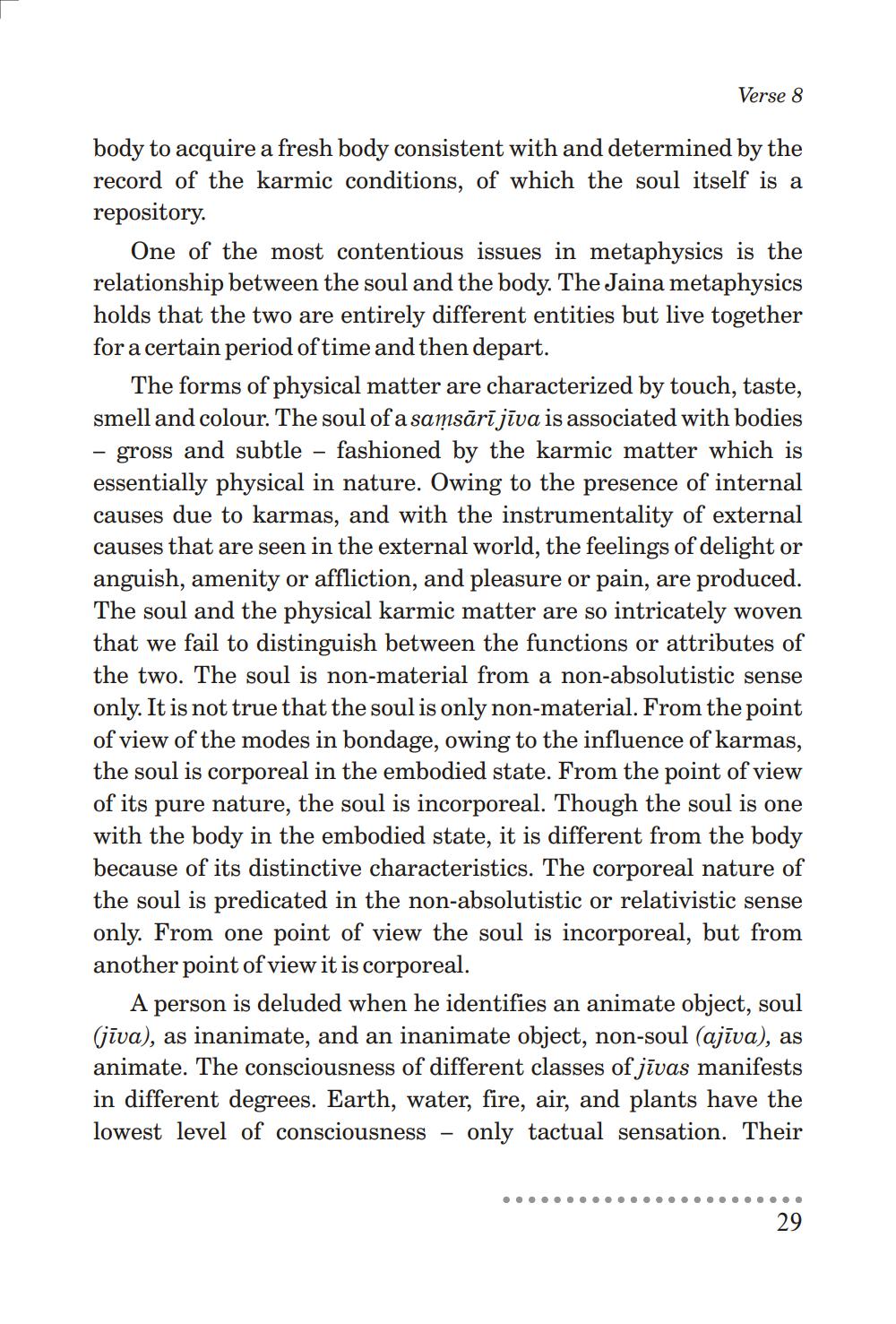________________
Verse 8
body to acquire a fresh body consistent with and determined by the record of the karmic conditions, of which the soul itself is a repository.
One of the most contentious issues in metaphysics is the relationship between the soul and the body. The Jaina metaphysics holds that the two are entirely different entities but live together for a certain period of time and then depart.
The forms of physical matter are characterized by touch, taste, smell and colour. The soul of a samsārījīva is associated with bodies - gross and subtle - fashioned by the karmic matter which is essentially physical in nature. Owing to the presence of internal causes due to karmas, and with the instrumentality of external causes that are seen in the external world, the feelings of delight or anguish, amenity or affliction, and pleasure or pain, are produced. The soul and the physical karmic matter are so intricately woven that we fail to distinguish between the functions or attributes of the two. The soul is non-material from a non-absolutistic sense only. It is not true that the soul is only non-material. From the point of view of the modes in bondage, owing to the influence of karmas, the soul is corporeal in the embodied state. From the point of view of its pure nature, the soul is incorporeal. Though the soul is one with the body in the embodied state, it is different from the body because of its distinctive characteristics. The corporeal nature of the soul is predicated in the non-absolutistic or relativistic sense only. From one point of view the soul is incorporeal, but from another point of view it is corporeal.
A person is deluded when he identifies an animate object, soul (jīva), as inanimate, and an inanimate object, non-soul (ajīva), as animate. The consciousness of different classes of jīvas manifests in different degrees. Earth, water, fire, air, and plants have the lowest level of consciousness - only tactual sensation. Their
29




